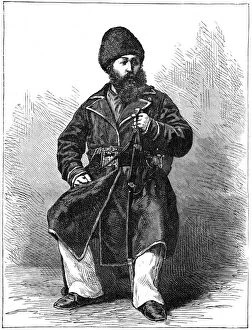Afghani Collection (#3)
"Exploring the Rich Cultural Heritage of Afghanistan: From Dancing Dervishes to Majestic Thrones" Step into the enchanting world of Afghanistan's cultural tapestry
All Professionally Made to Order for Quick Shipping
"Exploring the Rich Cultural Heritage of Afghanistan: From Dancing Dervishes to Majestic Thrones" Step into the enchanting world of Afghanistan's cultural tapestry, as depicted in these captivating artworks. In Bihzad's "Folio from a Divan of Hafiz, " we witness the mesmerizing movements of Dancing Dervishes, their whirling bodies reflecting spiritual devotion. Transporting us further back in time, James Atkinson's artwork portrays the tumultuous First Anglo-Afghan War (1838-1842), where Afghan Frontier Raiders valiantly defended their homeland against foreign invaders. The Khyber Pass stands as a testament to their resilience and bravery. Delving into literature, Nizami's Khamsa offers glimpses into ancient tales like "Khusrau Seated on his Throne. " This folio transports us to an era when kings ruled with grandeur and wisdom. Similarly, Bahram Gur graces our imagination through various palaces - white or yellow - showcasing opulence beyond compare. In Farhad Carves a Milk Channel for Shirin, we discover a love story etched in stone by Farhad's unwavering determination. His laborious task symbolizes devotion that transcends boundaries and resonates across centuries. The Afghan War (1879) takes center stage with Joseph Swain's poignant artwork titled "Save Me from my Friends. " It encapsulates the complexities faced by Major Wigram Battye during this conflict, highlighting both loyalty and betrayal amidst chaos. Sher Ali Khan emerges as a significant figure in Emir of Afghanistan (1900). His leadership shaped the destiny of his nation during challenging times while striving for progress and stability. Through these diverse artworks spanning different periods, we gain insight into Afghanistan’s rich history – its vibrant culture interwoven with tales of valor, love, power struggles, and friendship. Each piece serves as a window into this fascinating land, inviting us to appreciate its artistic heritage and the resilience of its people.
















































